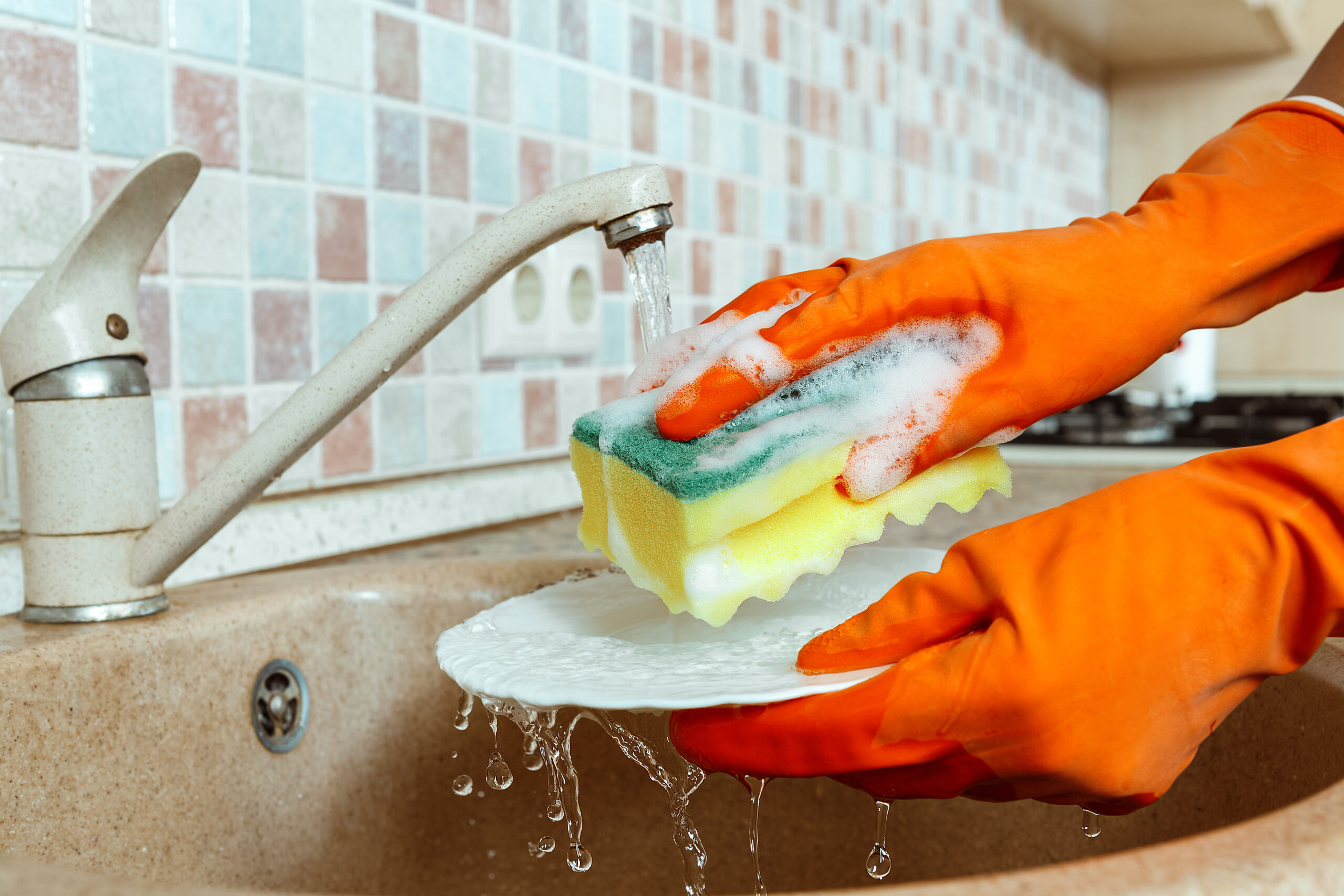Table of Contents

That trusty kitchen sponge ― scouring savior and dishwashing stalwart.
We count on it to vanquish grime, purge plates of pesky particles. But could this unsung hero of hygiene be harboring a sinister secret?
New research unveils an unappetizing reality: your humble cleaning companion may be a sprawling metropolis for menacing microbes.
The Bacterial Breeding Ground
Innocuous and inert they seem, kitchen sponges are actually teeming bastions of bacterial life. A single sponge can host a staggering 54 billion microbes, encompassing up to 362 different species.
While some of these microscopic denizens are benign, notorious culprits like E. coli, Salmonella, and Staphylococcus aureus often lurk amidst the ranks. These opportunistic pathogens exploit the sponge's moist, porous refuge, lying in wait to contaminate unsuspecting dishes, utensils, and hands.
Surviving Against the Odds
Surely, routine washing and microwaving must thwart these minuscule menaces? Unfortunately, studies shatter this hopeful assumption.
Bacteria like E. coli can survive for a startling 16 days on a sponge, even after rigorous cleaning with soap and scalding water.
The sponge's labyrinthine structure shields germs from complete eradication, allowing them to hunker down and resurge with shocking speed. Within a mere 20 minutes of disinfection, bacterial counts can rebound to pre-cleaning levels.
Cross-Contamination Catastrophe
This microbial stronghold poses an insidious threat: cross-contamination.
As the sponge glides across surfaces and sinks its porous tentacles into dishwater, it becomes a roving distributor of germs. Bacteria cling to its crevices, hitching a ride from one unsuspecting vessel to the next.
A single swipe can transfer millions of microbes, transforming sparkling clean dishes into veritable petri dishes. From there, it's a short journey to unsuspecting mouths, where these microscopic stowaways can unleash bouts of food poisoning, gastroenteritis, and worse.
The Dishtowel Dilemma
If you think swapping sponges for dishcloths offers salvation, think again. Microfiber towels, beloved for their durability and versatility, are equally complicit in microbial misconduct. Research reveals these textured cloths can harbor hazardous bacteria for up to 13 days, defying even vigorous laundering.
As cloths sop up spills and smears, they become increasingly soggy breeding grounds, their fluffy fibers ensnaring moisture and organic matter that nourish flourishing bacterial colonies. With each pass over plates and countertops, they shed an invisible trail of contamination.
Stemming the Microbial Tide
In the face of such an intractable enemy, what's a hygiene-conscious household to do? Microbiologists advocate a multi-pronged defense:
● Replace sponges every 1 to 2 weeks, and dish towels more frequently.
● Dedicate separate sponges and cloths for dish duty and surface wiping.
● Wring sponges and hang towels to dry between uses, depriving bacteria of moisture.
● Sanitize sponges daily in diluted bleach or hydrogen peroxide, then microwave while damp.
● Launder dish towels on the hottest setting, with chlorine bleach when compatible.
● Consider silicone scrubbers or brushes, which dry quickly and harbor fewer bacteria.
Eternal vigilance is the price of pristine dishes, it seems. By understanding the hidden hotbeds of contamination in our kitchens, we can mount a more strategic defense against microscopic marauders.
AD
Most Recent
AD
